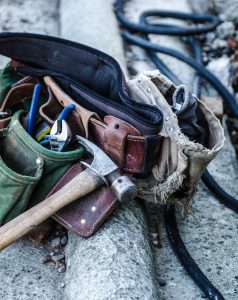Engineering Studies: a Tool in Your Belt
By Matthew Strebe
What if you could reduce utility costs 5-20%, have a more comfortable work environment, and improve productivity and throughput?
Engineering Studies are a tool in your management tool belt to do just that. A study can also reduce operating costs and improve building performance. Simply put, studies can be to a building what a tune-up is to a vehicle.
The How-Tos Of A Successful Engineering Study
With a few simple steps, a plant manager or owner can execute a successful Engineering Study.
Schedule An Initial Consult With A Study Provider
At S.E.S., Inc., this initial consult is free. A consult will provide valuable information in four primary areas:
- Eligibility – a consult will determine a facility’s eligibility for studies and other rebate programs such as lighting, heating, cooling, etc.
- Rebate strategy – a consult will help develop a strategy to maximize rebates available.
- Internal resource requirements – a consult will give the customer an idea of the potential magnitude of the rebates. Knowing the rebate amount helps determine out-of-pocket costs as well as additional resources required.
- Management buy-in – by being more informed, you will have the knowledge critical to getting the buy-in you need from your management/ownership.
Get The Management Team And Maintenance Staff On Board With The Idea
Since business alignment is crucial to the success of a study, this is your next step. Let the information do the talking. Management often pays attention when one shows that a typical study will save between 5% and 20% of the annual gas or electric bill.
Example: A food processing plant operates 5 days a week, 24 hours per day, and has approximately 200,000 square feet of production space. About $50,000 to $200,000 in electric and gas reductions may be identified during the investigation process.
Identify And Connect With the Property’s Utility Representatives
The utility representatives are a great resource and often understand the history of the property. In addition, they can save you paperwork time by providing bill history and other facility information required directly to the Engineering Service Provider electronically.
Initiate A Study With A Study Provider
A study provider will complete an in-depth study, provide a report, and follow up with the project team to discuss associated energy saving opportunities, and building and production improvements. A study may provide the financial justification needed to address more complex and capital intense projects. Examples of this may include that new condensing boiler that was waiting until next summer, or a large controls upgrade that will improve the existing user- unfriendly system.
For more information, visit us on our website at www.ses-inc.org or contact us here.

Case Study:
Uponor, Inc., Apple Valley, Minnesota
Year Founded: Its origins go back to 1620 as Wirsbo in Virsbo, Sweden. Current corporate parent headquarters is Vantaa, Finland
Operations: 24 hours/day, 7 days per week
Uponor, Inc., a Manufacturer’s Alliance partner, has worked with Xcel Energy, CenterPoint Energy, and associated consultants for a number of years and continues to build on past successes, especially in the area of sustainability. 2015 is no different. The Uponor team partnered with S.E.S., Inc. for engineering and technical measurement support to identify and develop strategies for additional process improvements.
The Uponor team provided detailed operation and technical information to S.E.S., Inc. This information and further investigation led to controls upgrade opportunities, HVAC improvements, and an air compressor upgrade. S.E.S., Inc. maintained close communication to Xcel Energy to garner additional incentives and rebates making larger capital investments more attractive. Ultimately, the project provided the technical and financial justification to make changes needed to:
1. Make tighter process control improvements
2. Reduce the energy intensity on a per foot basis
3. Improve equipment and process reliability
From A Director Point Of View – Rusty Callier:
At Uponor we believe in the triple bottom line – people, planet, and profit – and operational excellence. One does not take away from the other but need to balance and blend in a way that our actions, while sustainable, make for better people process and provide a return on our investment.
Uponor has had many successes working with S.E.S., Inc. over the past two years. All highlight some great story of collaboration, research, evaluating, testing, and implementing changes. A few do stand out more than others.
Here are some successes:
- Air compressor upgrades have resulted in a 50% reduction of preventative maintenance (PM) costs
- Electric cost per unit of compressed air has been reduced
- Electric utility billing rate structure changes have resulted in substantial savings
- Ability to speed up extruders while maintaining the same rate of kilowatt-hour consumption
While this list does not include all we have been able to accomplish partnering with S.E.S., Inc., it is a good representation of the relationship that has developed over the years. It is a lot to just keep up with growth and the daily grind of running a 24/7 operation, and having a trusted resource like S.E.S., Inc. in your corner to sniff out sustainability wins helps tremendously.
Matthew Strebe is a MN Licensed Engineer and ASHRAE certified
professional at Sustainable Energy Savings, Inc. Article originally posted on the Manufacturers Alliance Insider, “Engineering Studies: Why They Could Be the Best Thing You Do For Your Plant in 2016“, January 2016. Header Photo Credit: Licensed through C.C. by 2.0. Photo Credit: Uponor with permission



